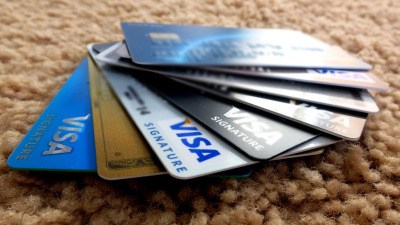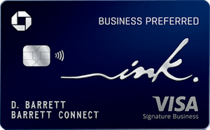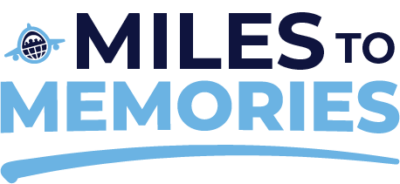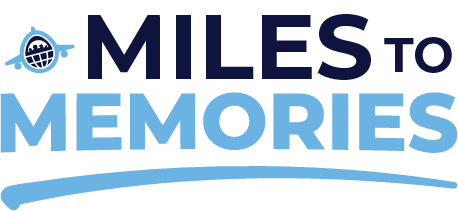
Synchrony High Charge-Off Rates – Is This a Bad Sign
This week Synchrony Financial caused a bit of an uproar on Wall Street when they announced that for the next 12 months their charge-off rate would be 4.5% to 4.8%. Specifically they said:
While the loss rate in our portfolio is at historically low levels, we very recently finished our loss forecast, and we are now expecting a 20-30 basis point increase in our net charge-off rates as we look out over the next 12 months.
This news caused some panic and the company’s stock dropped 14%. Some other credit card issuers also lost stock value on the news. So is this news a sign of bad things to come?
A Quick Look at the Numbers
To be fair, Synchrony partners with a lot of stores including Walmart and has a lower quality portfolio then the average issuer and thus higher default rates than the industry average. According to the Wall Street Journal, at the end of March, 28% of Synchrony’s loans were to borrowers with FICO scores below 660. That is higher than other issuers such as Chase at 14% and Discover at 18%.
The Wall Street Journal article also asserts that this increase in write-offs may not be limited to Synchrony. For example, Capital One is seeing higher default rates than a year ago, however they have yet to adjust their forecasts. So we know that there is some increase in defaults, but what is causing this to happen? Perhaps consumers have taken on too much auto and student loans debt and this is affecting their ability to pay. I don’t know the answer, but let’s look at some numbers.
Federal Reserve Stats
According to the Federal Reserve, credit card default rates were 2.15% in the first quarter of 2016. That number has been relatively flat since the beginning of 2014 and is historically very very low. Let’s look at the default rate at various points over the past 25 years:
- Q2, 2009: 6.81%
- Q1 2006: 3.83%
- Q2 1992: 5.08%
Of course these are just snapshots and you can find all of the data on the Federal Reserve’s site, but one thing stuck out to me. Default rates are at all times lows. Just as Synchrony pointed out, even as defaults increase, they are historically very low and thus it is hard to panic.
My Thoughts
I am definitely not an expert on credit card default rates, although I cover and study the industry fairly closely. This news from Synchrony is probably not a huge deal unless it becomes a trend industry wide. At this time there isn’t evidence that higher default rates are an epidemic, although reports seem to indicate that Americans are taking on more debt now compared to the start of the Great Recession.
This probably won’t have a huge effect on the average consumer who doesn’t pay interest (pay off your debt), although banks are likely to tighten approvals and other incentives if they are losing more money due to defaults. I just hope my beloved Synchrony Banana Republic Visa continues with its impressive spending offers.
Conclusion
Given this is an election year, the economy will no doubt be a huge topic, although things seem to be going well according to the numbers. At this point it is hard to tell if Synchrony just made some bad lending decisions or if this higher default rate is a bad sign of where things are headed across the entire industry. Either way, the Wall Street Journal article and Fed data are fun to look at.
What do you think about this topic? Should Synchrony cut back their generous 2 liter bonus on the Walmart credit card? Let me know your thoughts in the comments!
Lower Spend - Chase Ink Business Preferred® 100K!


Learn more about this card and its features!
Opinions, reviews, analyses & recommendations are the author’s alone, and have not been reviewed, endorsed or approved by any of these entities.



7 years after the last subprime mess, the previously bankrupt folks managed to start getting unsecured credit again. A year or two later and now they’re defaulting again. Who’da thunk?!
I have a WMMC cc from Synchrony and two or three months ago, I noticed a banner at Murphy’s saying 2% back when you use it at the pump. It used to be 5 cents off per gal using the card PLUS $5 statement credit for every $500 spend monthly. Buying a WM gas card with a 2% card and get 3 cents off per gal is a better deal. If I have to use a CC, I’ll use Chase AARP that gives 3% on gas.
All those free pumpkins and free 2-liters of soda at Walmart must have had a dramatic increase in sign-ups! And we scoff at them! 🙂
Being a former Synchrony employee, I can say that they specifically target individuals with credit scores between 640-660. This group of people are Synchrony’s bread and butter, they pay their bills most of the time, but also tend to carry a balance. With a slowing economy, it’s no surprise that they adjusted their charge off factor.
Great article Shawn.
While Capital One is one of the largest CC issuers, it has also spent a number of years diversifying it’s business to include much more than CCs. That may (IMO) point to a lack of change in the company’s near term outlook, despite the uptick in defaults.
Synchrony, on the other hand, has it’s fingers in a lot of smaller credit industry subsets – store brands that range from clothing (younger borrowers that may be less financially “responsible”) to auto parts & tire stores (need it now but can’t write the check? Finance it!). I have no insider knowledge of Synchrony’s credit granting criteria, but it would seem that it may just be (or “viewed to be” by the stock market anyway) granting credit to a riskier set of demographics in a much more narrow business model that can’t offset CC losses with other types of revenue.
Even those figures are sugar coated. My friend works at JP and he says it’s way worse.
Well, if your friend at JP says it is way worse, we all should panic!